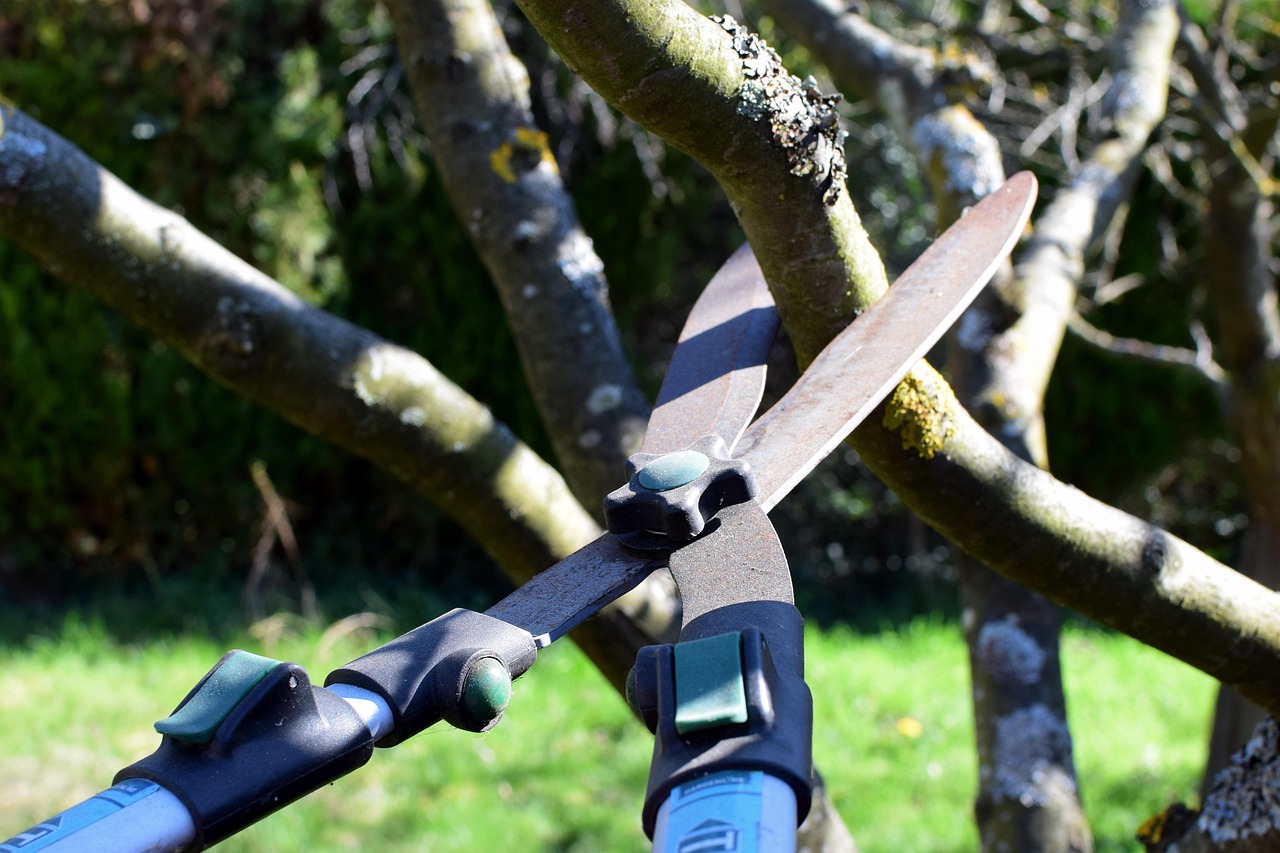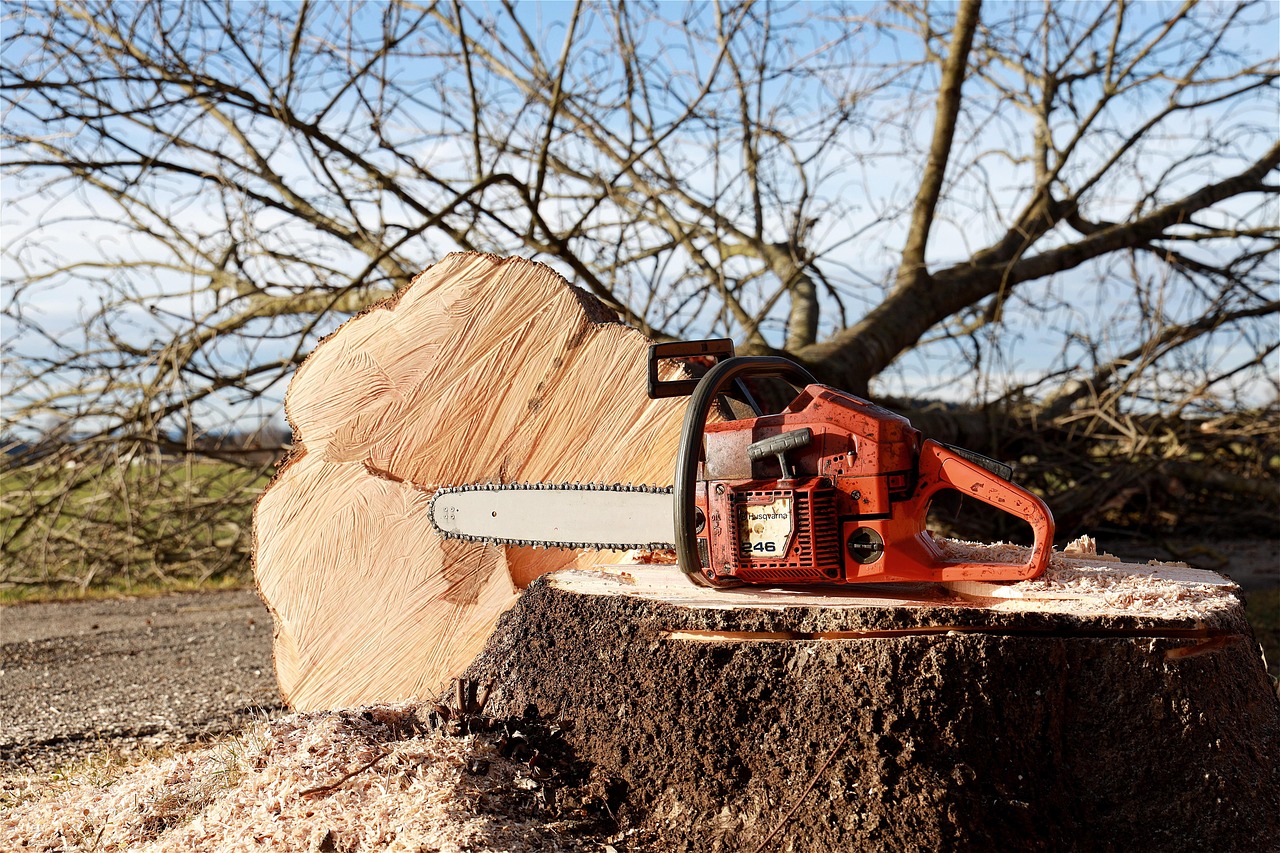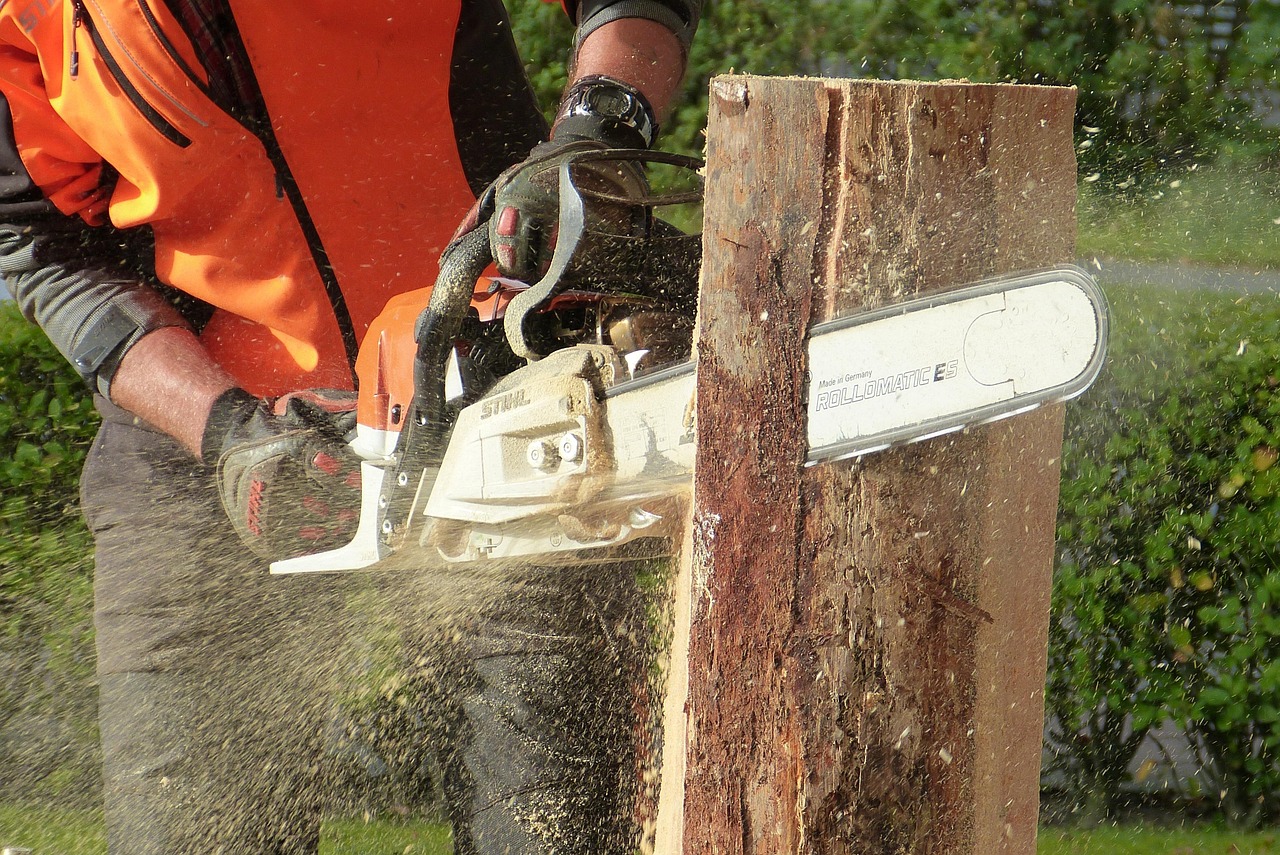Yearly tree pruning is essential for maintaining the health and aesthetics of your home garden. Proper pruning encourages new growth, improves fruit production, and prevents disease. Understanding the right techniques and timing is crucial for successful tree care.
Pruning trees in your home garden is a vital part of gardening that many enthusiasts often overlook. Trees provide beauty, shade, and even fruit, but without regular care, they can become overgrown and unhealthy. Pruning involves cutting away dead or overgrown branches to promote healthy growth and improve the tree’s structure.

There are various reasons to prune trees annually. It helps to remove diseased or damaged branches, which can harbor pests or disease. Additionally, pruning can enhance the overall shape of the tree and allow better sunlight penetration, which is particularly important for fruit-bearing trees. Understanding the best practices for tree pruning can lead to more vibrant and productive plants.
Understanding Tree Pruning Basics
Before diving into specific pruning techniques, it’s important to grasp the basic concepts of tree structure and growth patterns. Trees grow in cycles and have specific needs at different times of the year. The primary goal of pruning is to encourage a strong framework and healthy foliage.
Here are some key principles to keep in mind when pruning trees:

- Timing: The best time to prune most trees is during the dormant season, typically late winter to early spring before new growth begins.
- Tools: Use clean, sharp tools such as pruning shears, loppers, and saws to make clean cuts.
- Technique: Cut branches at a 45-degree angle to prevent water accumulation on the cut surface.
Different types of trees may require different pruning techniques. For example, deciduous trees often need more extensive pruning than evergreen trees. Understanding the specific needs of your trees will help you achieve the best results.
Choosing the Right Time for Pruning
Timing is crucial when it comes to effective tree pruning. Each tree species has its preferred time for pruning, often dictated by its natural growth cycle. Generally, the late winter or early spring months are ideal for most trees since they are dormant during this period. This timing minimizes stress on the tree and allows it to heal quickly once it starts growing again.
Some trees, however, may benefit from summer pruning. This technique can help control growth and improve sunlight exposure for remaining branches. Below is a table that summarizes the best times to prune various types of trees:

| Tree Type | Best Time to Prune | Notes |
|---|---|---|
| Deciduous Trees | Late Winter to Early Spring | Before new growth starts. |
| Evergreen Trees | Late Spring or Early Summer | After new growth has hardened. |
| Flowering Trees | Spring (after flowering) | To avoid removing flower buds. |
| Fruit Trees | Late Winter to Early Spring | Focus on shaping and thinning. |
Observing the natural growth patterns of your trees can also help determine when to prune. For instance, if you notice that a tree is growing too close to a structure or other plants, it may be time to take action outside of the usual seasonal guidelines.
The Tools You Need for Pruning
Having the right tools is essential for effective tree pruning. Using proper equipment not only makes the job easier but also ensures clean cuts that promote healing. Here are some basic tools you should consider:
- Hand Pruners: Ideal for small branches up to ¾ inch in diameter.
- Loppers: Best for branches that are ¾ inch to 1½ inches thick.
- Saws: Needed for larger branches; use a pruning saw or a chainsaw for thicker cuts.
- Safety Gear: Wear gloves and safety goggles to protect yourself while working.
Ensuring that your tools are sharp and clean before use can significantly impact your pruning results. Dull tools can cause tearing and damage to the tree, making it more vulnerable to infections.

The knowledge of when and how to prune is vital for any home gardener looking to maintain a beautiful landscape. By following these guidelines, you can ensure that your trees thrive year after year.
Pruning Techniques for Different Tree Types
Understanding the specific pruning techniques for different types of trees is crucial for achieving optimal results. Each species has unique growth patterns and requirements. Knowing how to prune effectively will enhance the health and aesthetics of your trees.
Deciduous Trees
Deciduous trees shed their leaves annually, making them prime candidates for winter pruning. This practice allows you to see the tree’s structure clearly without the distraction of foliage. Here are some important techniques for pruning deciduous trees:
- Thinning: Remove select branches to improve air circulation and light penetration.
- Heading: Cut back a branch to a lateral bud to encourage new growth.
- Reduction: Reduce the size of a tree by cutting back to a lateral branch that is at least one-third the diameter of the cut branch.
When pruning deciduous trees, always make cuts just outside the branch collar, which is the swollen area where a branch meets the trunk. This area helps the tree heal properly.
Evergreen Trees
Evergreen trees maintain their foliage year-round, requiring a different approach to pruning. The goal is often to maintain shape rather than to promote new growth. Key techniques include:
- Pinching: Remove new growth tips to encourage bushiness.
- Selective Pruning: Trim older branches to maintain the tree’s natural shape.
- Shearing: Use hedge shears for a formal appearance, but avoid excessive shearing as it can lead to stress.
It is important to avoid heavy pruning on evergreen trees, as they may not respond well. Always aim for a light touch to preserve their natural form.
Pruning Fruit Trees
Proper pruning of fruit trees is essential for maximizing yield and maintaining tree health. These trees typically require more attention than ornamental varieties. Here are some effective strategies for pruning fruit trees:
- Open Center Pruning: This technique involves removing branches from the center to create an open canopy, allowing sunlight to penetrate.
- Spur Pruning: Focus on pruning back to spurs—short shoots that bear fruit. This encourages better fruit production.
- Summer Pruning: In addition to winter pruning, summer pruning helps control vigorous growth and improves fruit quality.
The timing of pruning is critical for fruit trees. It is generally best to prune stone fruits (like cherries and peaches) in late winter or early spring, while pome fruits (like apples and pears) can be pruned in late winter.
Avoiding Common Pruning Mistakes
Even seasoned gardeners can make mistakes when pruning trees. Being aware of common pitfalls can help ensure that your efforts yield positive results. Some common mistakes include:
- Over-Pruning: Removing too much foliage can stress the tree and hinder its ability to produce energy through photosynthesis.
- Poor Cuts: Making cuts at the wrong angle or too close to the trunk can lead to damage and disease susceptibility.
- Ignoring Tree Type: Each tree species has specific needs. Failing to account for these differences can result in improper care.
To avoid these mistakes, always plan your pruning strategy ahead of time. Assess the tree’s health, structure, and growth pattern before making any cuts.
The Importance of Clean Cuts
Making clean cuts is essential for successful tree pruning. Rough cuts can create wounds that take longer to heal, increasing the risk of disease. Here are some tips for ensuring clean cuts:
- Use Sharp Tools: Dull blades tear rather than cut, leading to jagged edges.
- Cut at the Right Angle: Make cuts at a 45-degree angle to promote water runoff and prevent rot.
- Avoid Tearing: Support heavy branches when making cuts to prevent tearing of the bark.
After cutting, it may be beneficial to apply a sealant on larger cuts. This helps protect the exposed area from pests and diseases. However, many experts suggest that natural healing is usually sufficient for smaller cuts.
Safety Measures When Pruning
Safety should always be a priority during any gardening activity, especially when using sharp tools or working at heights. Here are some important safety measures to observe while pruning trees:
- Wear Protective Gear: Always wear gloves, safety goggles, and sturdy shoes.
- Check Equipment: Ensure that all tools are in good working condition before you start.
- Use Ladders Safely: If using a ladder, ensure it is stable and placed on level ground.
Taking these precautions will help you minimize risks and enjoy a safer pruning experience. By following best practices and understanding the needs of your specific trees, you can achieve beautiful results in your home garden.
Identifying Tree Health Issues
Healthy trees are crucial for a thriving garden. However, trees can face various health issues that may require attention during pruning. Identifying these problems early can prevent further damage and ensure your trees remain robust. Here are some common signs to look for:
- Discolored Leaves: Yellowing or browning leaves can indicate nutrient deficiencies or disease.
- Wilting: Droopy or wilting leaves may signal water stress or root problems.
- Cankers: Dark, sunken areas on trunks or branches may indicate fungal infections.
- Pests: Look for signs of pests such as chewed leaves, webs, or visible insects.
If you notice any of these signs, it may be necessary to consult an arborist or tree care professional before proceeding with pruning. Addressing the underlying issues will help your trees recover more effectively.
Best Practices for Tree Pruning
Implementing best practices in tree pruning will not only enhance the health and aesthetics of your trees but also prolong their life. Below are several best practices to consider:
- Assess Before You Prune: Always evaluate the tree’s structure and health before making any cuts. Identify dead, diseased, or crossing branches that need removal.
- Follow the 1/3 Rule: When reducing the height of a tree, do not remove more than one-third of its total height at once to avoid stressing the tree.
- Prune in Stages: If a tree requires significant pruning, consider doing it over multiple seasons instead of all at once.
- Maintain Tools: Regularly maintain your pruning tools by cleaning and sharpening them to ensure effective cutting.
- Monitor Growth: After pruning, keep an eye on the tree’s growth and overall health. Adjust your care routine as necessary.
Adhering to these practices can lead to healthier trees and a more beautiful garden overall. Regular monitoring and maintenance are essential aspects of successful tree care.
The Role of Water and Nutrients
Proper hydration and nutrient supply play a significant role in maintaining healthy trees. Understanding how to support your trees through watering and fertilization will enhance their growth and resilience. Here are some guidelines to follow:
Watering Techniques
Watering is crucial, especially during dry spells. Here are some effective watering techniques:
- Deep Watering: Water deeply but infrequently to encourage deep root growth. Aim for 1-2 inches of water per week.
- Avoid Overwatering: Ensure that the soil drains well. Overwatering can lead to root rot.
- Use Mulch: Applying mulch around the base of the tree helps retain moisture and regulate soil temperature.
Nutrient Supply
Nutrients are essential for tree growth and overall health. Consider the following tips for fertilization:
- Soil Testing: Conduct a soil test to determine nutrient levels before applying fertilizers.
- Selecting Fertilizers: Choose slow-release fertilizers that provide nutrients over time without burning roots.
- Timing Fertilization: Fertilize in early spring or late fall, depending on the specific needs of the tree species.
By ensuring that your trees receive adequate water and nutrients, you will support their recovery from pruning and enhance their overall vitality.
Seasonal Pruning Considerations
The seasonal changes in climate affect how trees respond to pruning. Understanding these seasonal considerations can guide your pruning efforts effectively throughout the year.
Spring Pruning
Spring is often considered the most active growth period for many trees. Key points for spring pruning include:
- Avoid Late Pruning: Prune before new growth starts to prevent shock and stress.
- Remove Deadwood: Spring is an excellent time to remove any dead or damaged branches that may hinder new growth.
Summer Pruning
Summer pruning is less common but can be beneficial for certain species. Consider these factors:
- Control Growth: Use summer pruning to manage excessive growth and shape young trees.
- Avoid Stress: Be cautious about pruning during extremely hot weather, as this can stress the tree.
Fall Pruning
Fall is generally not recommended for most trees due to impending winter. However, if necessary, be mindful of the following:
- Avoid Major Cuts: Limit pruning to minor adjustments to reduce injury before winter dormancy.
- Prepare for Winter: Focus on removing diseased branches to prevent pests from overwintering.
The timing of your pruning activities, based on seasonal considerations, will significantly affect the health and productivity of your trees. Understanding how each season impacts tree behavior is essential for effective care.
Advanced Pruning Techniques
As you become more experienced in tree pruning, you may want to explore advanced techniques that can further enhance the health and appearance of your trees. These methods require a deeper understanding of tree biology and growth patterns but can yield impressive results.
Espalier Pruning
Espalier is a technique that involves training trees to grow flat against a wall or trellis. This method is particularly popular for fruit trees in small gardens where space is limited. Key steps for successful espalier pruning include:
- Selecting the Right Tree: Choose a tree species that responds well to espalier, such as apple or pear trees.
- Establishing Framework: Create a strong framework with horizontal branches that will act as the main structure.
- Regular Maintenance: Prune regularly to maintain shape and encourage new growth along the framework.
Crown Thinning
Crown thinning is an advanced technique used to reduce the density of a tree’s canopy without altering its overall shape. This technique is beneficial for mature trees that may become too dense, leading to poor air circulation and light penetration. Steps for crown thinning include:
- Identify Target Branches: Select branches that are crossing or overcrowded within the canopy.
- Make Clean Cuts: Use sharp tools to remove selected branches, ensuring you make cuts at the branch collar.
- Aim for Balance: Maintain a balanced appearance by evenly distributing cuts throughout the canopy.
Pollarding
Pollarding is a pruning method where trees are cut back to a specific height, encouraging new growth from the stubs. This technique is often used on trees like willows or linden. Key points to consider when pollarding include:
- Timing: Perform pollarding in late winter or early spring before new growth begins.
- Consistent Maintenance: Regularly pollard the tree every few years to maintain its shape and health.
- Avoid Over-Pollarding: Be careful not to remove too much foliage at once, as this can stress the tree.
Understanding Tree Growth Patterns
To become a proficient pruner, it’s crucial to understand how trees grow. Different species have unique growth patterns that influence how and when they should be pruned. Here are a few key aspects to consider:
Growth Hormones
Trees produce hormones like auxin, which regulate growth direction and speed. Understanding how these hormones work can help you make more informed pruning decisions. For example, cutting back a branch can redirect growth to other areas, encouraging fuller development elsewhere.
Branch Structure
The structure of tree branches affects how they respond to pruning. Branches typically grow in a pattern that supports their weight and maximizes sunlight exposure. When pruning, consider the following:
- Angle of Growth: Prune at an angle that encourages outward growth rather than inward.
- Weight Distribution: Recognize that heavier branches may need more support and should be pruned carefully to avoid stress on the tree.
Response to Injury
Trees have natural defense mechanisms to respond to injury. When you prune, the tree may react by producing new growth or sealing off the cut area. Understanding these responses can help you make decisions about when and how much to prune.
Integrating Technology in Pruning
With advancements in technology, gardeners can now use various tools and applications to enhance their pruning practices. Some options include:
- Drones: Drones equipped with cameras can help assess tree health from above, allowing for better planning before pruning.
- Mobile Apps: Numerous apps provide guidance on tree identification and care, helping gardeners make informed decisions.
- Soil Sensors: These devices measure soil moisture and nutrient levels, assisting in determining the best time for pruning based on tree health.
Final Thoughts
Tree pruning is an essential skill for any home gardener looking to maintain healthy and beautiful trees. By understanding the basics of tree care, seasonal considerations, different techniques, and advanced methods, you can ensure that your trees thrive year after year. Always prioritize safety and effective tool maintenance during your pruning activities.
The art of pruning is not only about cutting branches but also about fostering a deeper relationship with your garden. By observing your trees and understanding their needs, you will develop a keen sense of timing and technique that enhances both your gardening experience and the vitality of your landscape.
With proper care, your trees will not only beautify your garden but also contribute to a healthier environment. Embrace the journey of learning and adapting your techniques as you grow in your gardening skills. Happy pruning!
